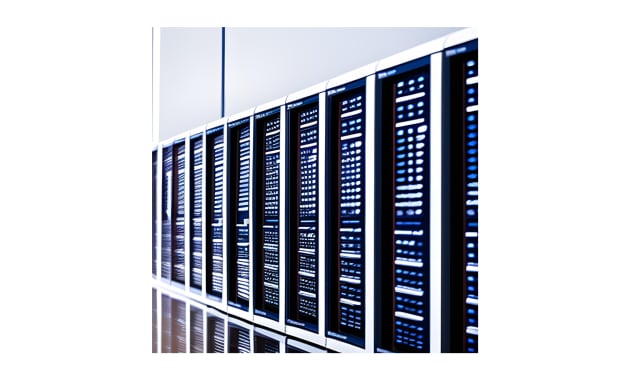Robotics in Industry
Automation and Its Effects on the Workforce

Introduction
In the relentless pursuit of technological advancement, humanity stands on the brink of a revolutionary era propelled by robotics and automation. The increasing integration of robots into various industries has sparked both excitement and concern regarding their impact on the workforce. This article delves into the remarkable rise of robotics in industry, explores the benefits and challenges associated with automation, and examines the transformative effects on the workforce.
The Rise of Robotics in Industry
The rapid progression of robotics technology has transformed industries across the globe. Automation has gained a significant foothold in sectors such as manufacturing, logistics, healthcare, and agriculture, enhancing efficiency and productivity to unprecedented levels. With advancements in artificial intelligence (AI), machine learning, and sensor technology, robots have become increasingly capable of performing complex tasks previously reserved for human workers.
Benefits of Automation
Automation brings forth an array of benefits that contribute to the revolutionary changes witnessed in industries worldwide. Increased productivity and efficiency are among the primary advantages of robotic integration. Machines can operate continuously without the need for breaks or rest, ensuring uninterrupted production and streamlined processes. The precision and accuracy of robots eliminate human errors, resulting in higher product quality and reduced waste.
Moreover, automation allows businesses to meet the rising demand for customized products. With robotics, production lines can quickly adapt to changing requirements, enabling manufacturers to offer personalized solutions while maintaining cost-effectiveness. The ability to scale production up or down efficiently ensures agility in response to market fluctuations, boosting competitiveness.
Automation also plays a crucial role in enhancing workplace safety. Robots can handle hazardous tasks, reducing the risk of injuries and accidents for human workers. Dangerous environments, such as those in mining or nuclear power plants, can now be explored and maintained by robots, mitigating the dangers faced by human personnel.
Challenges and Concerns
While the revolution brought about by automation is undoubtedly promising, it also poses significant challenges and concerns for the workforce. One of the primary concerns revolves around job displacement. As robots become more capable of performing tasks traditionally done by humans, there is a legitimate fear that certain job categories may become obsolete. This can lead to unemployment and socioeconomic instability.
However, it is crucial to note that while automation may eliminate certain jobs, it also creates new ones. The rise of robotics necessitates a workforce with advanced technical skills to design, program, maintain, and manage these systems. The demand for skilled workers in fields such as robotics engineering, data analysis, and AI development is expected to surge, providing opportunities for those willing to adapt and upskill.
Another concern is the potential impact on income inequality. If automation primarily benefits the wealthy and exacerbates the income gap, it could lead to social unrest and further polarization. Society must strive to ensure that the benefits of automation are shared equitably, with policies and initiatives in place to support workers through transitions and reskilling programs.
The Transformative Effects on the Workforce
The transformative effects of robotics on the workforce are already evident. Automation has reshaped job roles, requiring workers to evolve and adapt to the changing landscape. Routine and repetitive tasks are increasingly automated, enabling human workers to focus on more creative and cognitive aspects of their jobs. This shift demands an emphasis on lifelong learning and the development of transferable skills that complement automation.
Moreover, the symbiotic relationship between humans and robots is becoming more apparent. Collaborative robots, or cobots, are designed to work alongside humans, augmenting their capabilities and improving overall productivity. By delegating mundane tasks to robots, human workers can engage in more fulfilling and value-added activities, fostering innovation and creativity.
Furthermore, automation has the potential to address demographic challenges in the workforce. As populations age and birth rates decline, robots can alleviate labor shortages by assisting in physically demanding tasks and providing care for the elderly. In healthcare, robotic surgeons enhance precision and enable remote medical procedures, expanding access to quality healthcare services.
Conclusion
The rise of robotics in industry has ushered in a revolutionary era of automation, promising increased productivity, efficiency, and safety. While concerns surrounding job displacement and income inequality are valid, the transformative effects on the workforce are multidimensional. Automation necessitates the development of advanced technical skills and offers new job opportunities in emerging fields. As we navigate this transformative period, it is vital to ensure that the benefits of automation are shared equitably and that workers are supported through reskilling programs. By embracing the revolution of robotics in industry, humanity can harness its potential to create a brighter and more prosperous future.
About the Creator
ITSARA SRETRAKOOL
Invite you to embrace the power of inspiration, for within it lies the potential to transform not only our own lives but also the world around us.






Comments
There are no comments for this story
Be the first to respond and start the conversation.